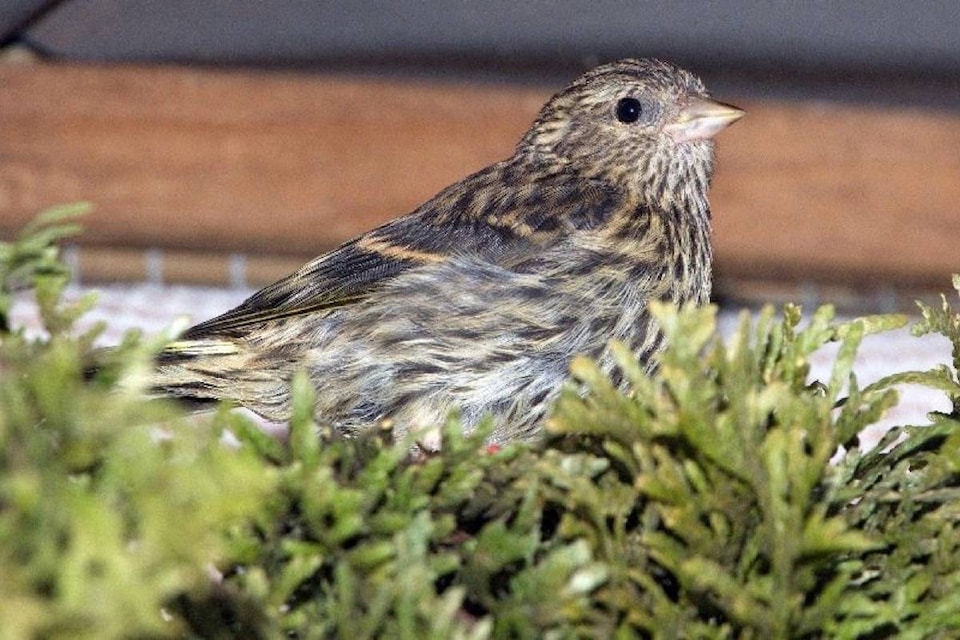The Wildlife Rescue Association of B.C. is recommending people with bird feeders refrain from putting them out until later in the spring to prevent an outbreak of salmonella among pine siskin birds, or monitor them closely and make sure they are cleaned regularly.
Wildlife technician Meghan Coughlan said the Burnaby-based association was inundated with pine siskins, songbirds that are very small with sharp, pointed bills and short, notched tails, suffering from salmonella in January, then the numbers started to drop off but have rebounded again in recent weeks.
RELATED STORY:
“That’s why we’re being cautious in telling people about what to do with their bird feeders,” she said.
“If people have not seen any pine siskins in their yard that are sick or dead for at least two weeks, they can put their bird feeders out, but clean them at least once a week with soap and water, and then disinfect them with a 10 per cent bleach solution. If you see any sick or dying pine siskins after that, take down the bird feeders for at least two weeks to allow the flock to disperse. It’s at people’s discretion to put them up, but waiting for spring would be more advisable.”
Hummingbird feeders can stay up, but should be cleaned regularly.
RELATED STORY:
Pine siskins breed in northern boreal forests, but range over much of North America.
It’s believed by many in the bird community that pine siskins have come down from the northern forests in larger numbers than usual this year because of an insufficient cone crop in those forests to feed them.
Some have salmonella and they are flocking in large numbers at people’s bird feeders, which is causing the salmonella to spread quickly among them because the disease is highly contagious among flocking birds.
“Once a bird is infected, mortality rates rapidly increase among all birds who contact the feeder,” the Wildlife Rescue Association of B.C. said in a news release in January after they admitted 78 of the birds from across Metro Vancouver who are suffering from the disease.
“Distressed birds must be handled safely and with care to prevent the spread through animals and humans.”
robert.barron@cowichanvalleycitizen.com
Like us on and follow us on




